interview
With Jim Andrews : Animisms, Material Spiritualism and Memorials
by Paule Mackrous
Cliquez sur les images pour voir les oeuvres
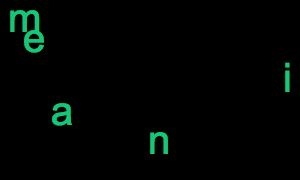
Exploring your interactive artworks gathered under the concept of "Animisms", I can see that they are all visually very different, but somehow, they give the netsurfer similar experiences. What was the general idea behind the Animisms"? In your view, how does the concept of animism apply to these artworks?
Animisms are kinetic poetry with soul. Kinetic poetry being poetry that moves. But, also, just about all of the animisms are interactive.
There's an old 'rule' of writing that says the verbs should drive it. In other words, the idea is that the action carries or drives the writing. Or, to put it another way, when the verbs are strong and not obscured by ornate clutter around them, the sense is forceful and clear because the action and the actors are clear.
Kinetic poetry introduces another type of action: movement of the poetry itself. How can this play into/with/against/amid the other type of action in writing? What changes, thereby, in how poems can mean?
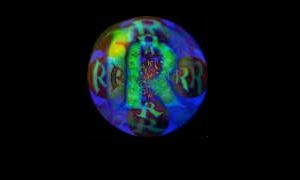
Additionally, the animisms are interactive. The action is determined by the actions of the wreader. The verbs, the motion, and the wreader drives the writing.
So the idea of the animisms is to explore motion and interactivity in writing. In strong relation to meaning.
The hope being that, when motion and interactivity are strongly tied to meaning, kinetic poetry can have a kind of liveliness, as art, worthy of the term 'animism'.
In a short text entitled "Spiritual Materialism" you write "machines are conceptualized not as the simple things we once thought they must be but as often very complex biological creatures". How does that relate to your own artistic practice and, for example, to your Animisms?
I'm interested in artificial intelligence, artificial life, and so on. But the life of a work of art is in a kind of liveliness that engages our own liveliness. It's isn't in artificial intelligence or artificial life--except insofar as they engage our liveliness.
The animisms I've created don't involve artificial life or, usually, artificial intelligence. They involve animation, interactivity, text, graphics, often sound--sometimes interactive sound. They're online, intermedial art works, programmed works of net art.
But I find things like artificial intelligence and artificial life of interest in matters of digital art. I think a lot of people think of computers as art media devices or as glorified typewriters or stereos or TV's, etc. But they're not. There is no proof, and probably never will be, that there exist thought processes of which humans are capable and computers are not. Computers are probably capable of the sort of flexibility we associate with thought itself. That means that, as art media, they are as flexible as life-forms themselves. This will make for some very strange and challenging art, in the future. But, in the present, it's important for digital artists to keep this sort of thing in mind so that their aspirations for digital art reach beyond the glorified typewriter or stereo or TV, etc.
Because computers are capable of being so radically flexible--they can be any machine we can think of--the possibilities for digital art are much broader than in conventional media.
The very notion of what we are is changed by the advent of computers as much as it was when Darwin's ideas challenged people to see our history in relation to that of other living and evolving creatures on the planet. There was strong resistance to his ideas--and still is, in some places, though Darwin's ideas are widely considered foundational to large parts of modern biology. Similarly, the idea that computing machines will eventually be capable of thought gets a lot of resistance. But it seems only a matter of time, to me, before computing devices are intelligent. What would that mean to art? Intelligent being as work of art? Or what?
Also, the notion that we ourselves are machines seems to many people to be false because they think of machines as toasters and TVs, contemporary computers, and so on, which are obviously light years from our own capabilities. But if we think of machines in broader terms, in terms commensurate with what we know about them from the theory of computation, say, then we begin to see how computing machines can go a very long ways.
The liveliness of my animisms is not via "artificial life" or "artificial intelligence". The stir fry texts spastically twitch and transform as you move the mouse over them. They have behavior and character independent of the texts in the pieces. Seattle Drift, a different piece, talks about itself: "I'm a bad text. I used to be a poem, but drifted from the scene. Do me. I just want you to do me." And you can. You can click to "Do the text" or "Stop the text" or "Discipline the text". The words begin to drift off the screen when you click "Do the text". It has that sort of 'life'. A different animism called Arteroids is a shoot-em-up poetry game. You pilot your text with the arrow keys and shoot with the x key. You shoot texts that are out to kill you. And you can use Word for Weirdos to create your own texts and save poetry from yourself. The animisms are, hopefully, lively works of art via their texts, interactivity, and the resulting character of the animisms.
In four recent projects entitled Dick Andrews (your father), Evelyn Andrews (your Mother), Lucy Milne (your aunt) and Georgie (your aunt), you create collages with narratives, photos and videos about members of your family. You told me that most of them died and I feel like the projects make them "alive" in a certain way. Browsing the artworks, I interpret them as memorials or even rituals as well as a tributes to those people that you love. How do you see these very intimate web projects? What meaning do you give them?
Yes, they've all passed away. And, yes, those projects are, to me, memorials to people I loved.
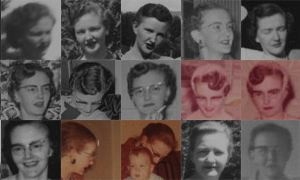
The first one I did was the one to mom ( http://vispo.com/mom ). She passed away in 2008. I was the 'caregiver' to her for 8 years before she died. When she died, I organized the memorial service for her. And wanted to put together some of the family pictures I inherited from her. I used the slideshow software I'd developed for another project (called dbCinema). At the memorial service, I ended up showing the photos themselves--it was easier to do that rather than show prints of them or whatever. But I'd scanned the pictures and a web display of them would be nice, I felt, for her friends from far away who couldn't make it to the service.
Putting the photos in chronological order, so that we see pictures of her from the time she was a baby until near the end of her life, makes for something that is more explicable to people who did not know her, it turns out. Of course, chronological ordering is the most obvious way to order life photos, regardless of what you know about the subject.
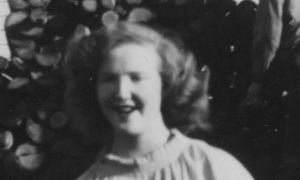
The pictures of mom and dad and Georgie that I have were selected by mom in the sense that she built up the photo collection over the course of her life. So the web displays of these photos are, in that sense, our one and only collaborative art project together. I think she would be happy to know that, very unexpectedly to me, the pictures of her were mentioned in Paris and in Le Monde. I hadn't really publicized this project as an art project, but I did let people know about it who subscribe to my vispo.com newsletter. One of those people, who knows and wrote earlier about my work in generative art, wrote about mom's pictures in his Paris blog ( http://www.fluctuat.net/blog/13583-Memorial-numerique ) and I think Le Monde picked it up from them.
Which only goes to show you can just never tell how people are going to respond. In this case, a project that I was not really thinking of as art got more attention, as art, than many art projects I've done. Which showed me that life pictures, ie, a series of pictures arranged chronologically from birth to death, can simply be very compelling, whether we think of that in terms of art or just life or some mixture. It was also rather therapeutic for me. Just to go through the pictures and meditate on mom's life with the help of the pictures.
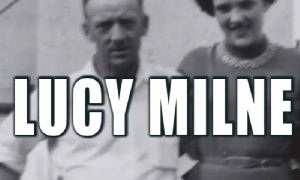
My aunt Lucy was 97 after mom passed away. So I bought a video camera and learned how to use that a bit and made the two videos at http://vispo.com/lucy , which are conversations between Lucy, her daughter (my cousin) Isabelle, and myself. I wanted to talk with Lucy about the family photos. And incorporate those photos into the video. Those videos contain about 200 family photos. These are the only videos of Lucy. I hope they're a nice thing for Isabelle and others in the family, including the kids and the later ones who will never have known Lucy. In the context of my vispo.com site, the videos also let people get to know me and my family in a different way than the (other?) art does.
Lucy was going downhill when I made those videos. If I'd waited another two weeks, she wouldn't have been able to talk as well as she did in them. She passed away before the videos were completed.
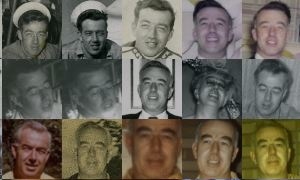
The memorials to dad ( http://vispo.com/dad ) and Auntie Georgie (http://vispo.com/georgie ) were ones I did after the videos on Lucy. Dad was my hero, really. We were very close. I'd wanted to do something with photos of him since he passed away in 2000. I don't go visit the place where he was cremated, or his memorial plaque, or whatever. It's more meaningful to me to do something like work with pictures of him, or look at pictures of him, as a kind of memorial or ritual, as you say.

I wrote something about dad, also ( http://vispo.com/dad/dad.htm ), Georgie was my mom's sister. Like me, she didn't have any kids. When she passed away in 1997, mom was the executor of her will. We ended up with Georgie's photos and memorabilia. And when mom passed away, I ended up with it. When mom passed away, I inherited the house she and dad lived in for forty years. And mom had a hard time getting rid of old stuff. So I've been going through pictures, diaries, scrapbooks, old bills, correspondence, and so on that mom kept. And some of Georgie's, also. I had to throw out a lot of this stuff, but I wanted to try to do something with Georgie's pictures as a memorial to her. She was a ballsy banker with soul. How many of those can there be?
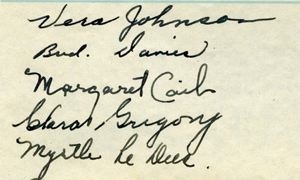
One of the art lessons I've learned in doing this work on my family concerns photography. Up until this project, I hadn't really done much with photography or video. If you look at my site, you have to notice, at some point, that it isn't very photographically-oriented at all. When my site is graphical, often the graphics are lettristic animations. Though dbCinema, a recent project, moves more into a kind of photographic dimension. But, for the most part, my site is textual or visual poetry or sound poetry/music and interactive. Not especially photographic or video-oriented. So working with photos and video was kind of new for me.
To some extent, it was a matter of trying to create an environment where the photos could simply tell their story. The story that results when they're simply ordered chronologically. Different people will make that story up differently, of course. But everyone who sees the pictures will make up some life story. And will absorb some of the life story that is 'told' by me or the pictures or both. It's quite an open form. The pictures, though, do an incredible amount of work on their own. To some extent, it was a matter of setting up an environment where they could just do their thing.

The strongly representational character of most photographs and most video often bugs me. Often one is told rather than shown. In other words, there is often not much art involved. In any case, this work I've done on my family is some of my first with strongly representational photography and video. I approached it not so much as art as family documentation. But, being an artist, the way I tend to make sense of the world is to explore it as art or as potential art. In any case, I wanted to be 'true' to these people I love.
 top top
 back back
|
